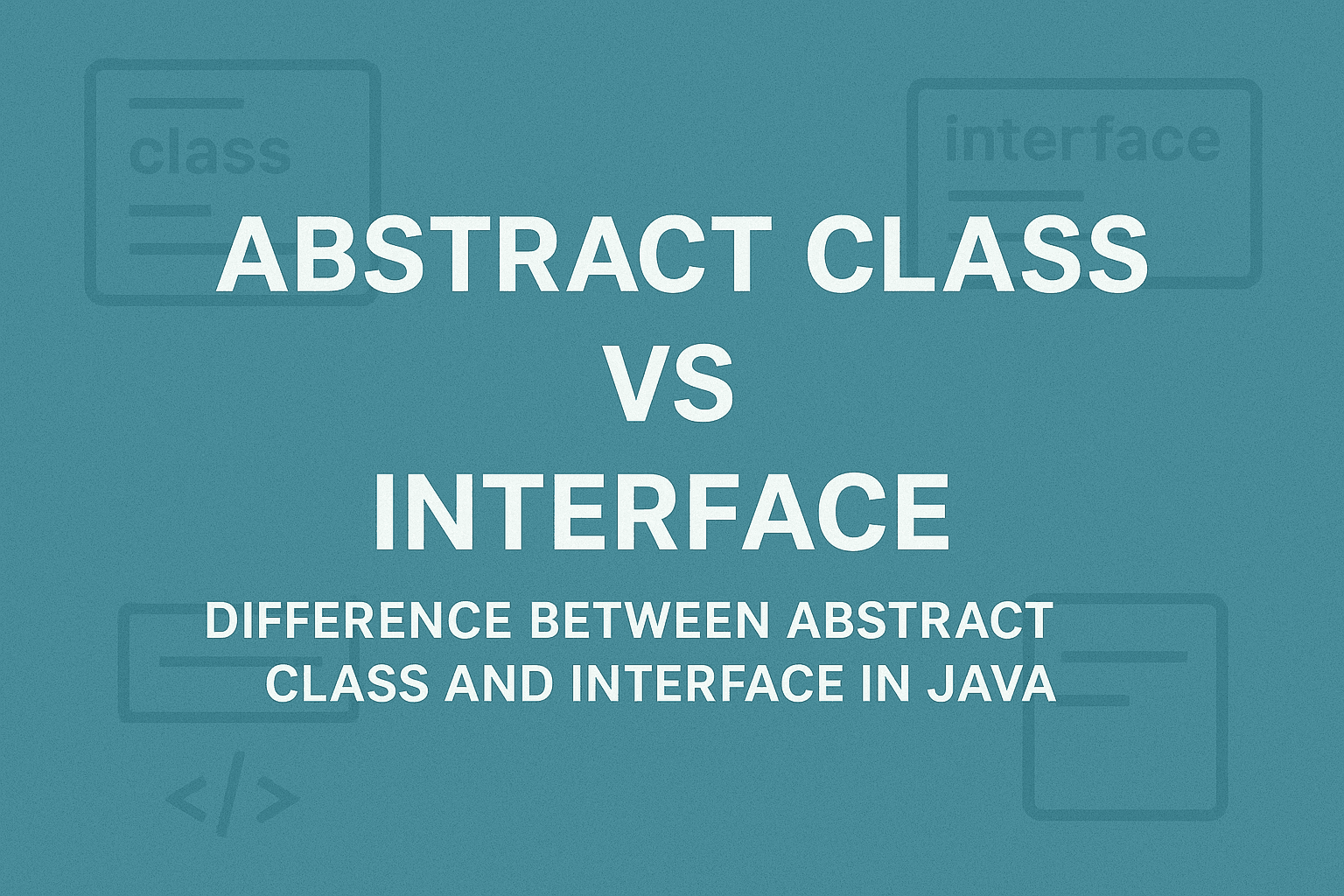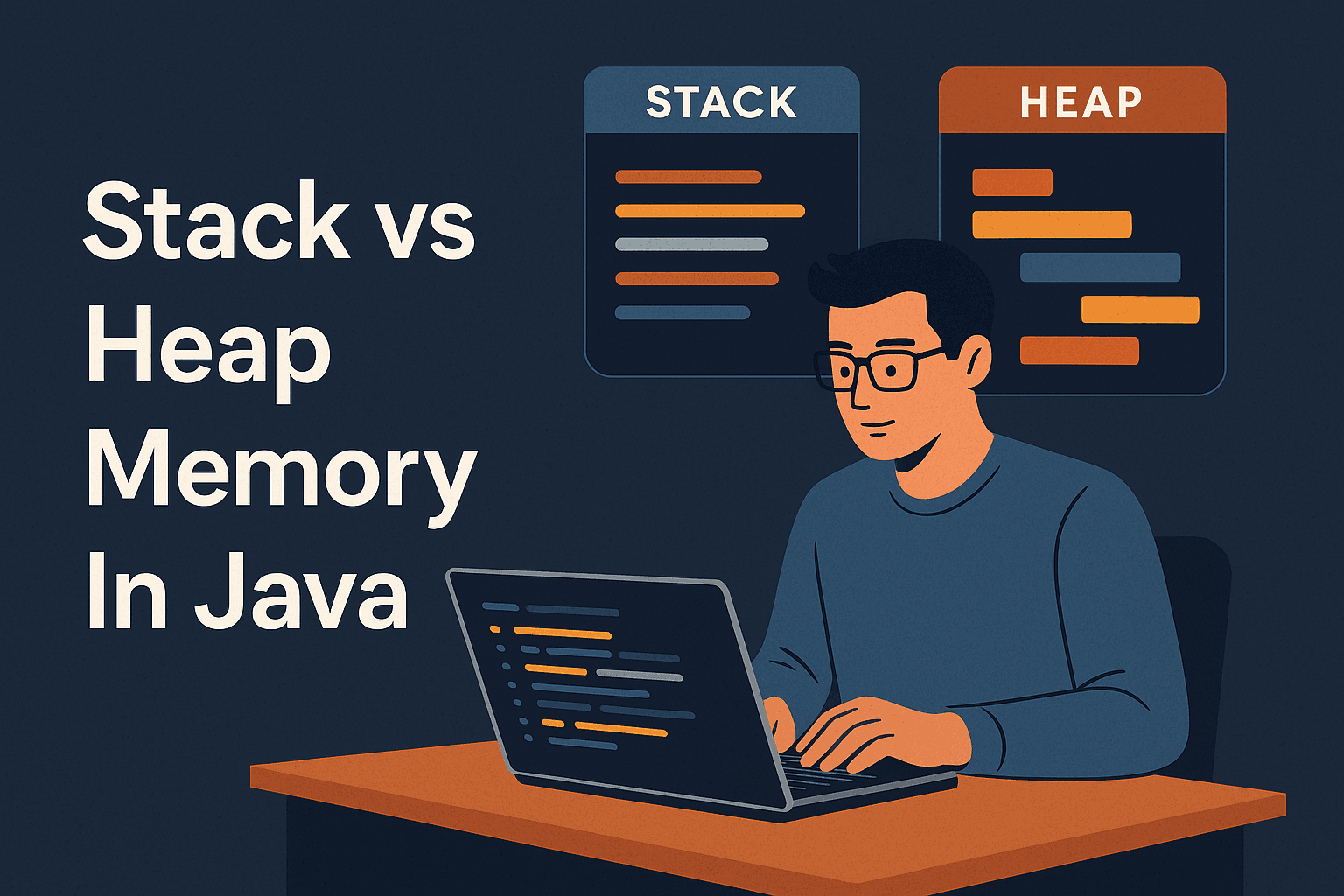
Stack and Heap Memory In Java
Confused about stack vs heap memory in Java? This beginner-friendly guide explains the key differences with examples, diagrams, and real-life code.
Munaf Badarpura
July 12, 2025
4 min read
If you are learning Java, you might have come across terms like stack memory and heap memory and wondered, "What's the difference?" You're not alone! These two play a big role in how Java stores and manages data during program execution.
In this blog, I will explain stack vs heap memory in a super simple way. For better understanding, no confusing terms. Just clear, beginner-friendly explanations with examples.
What is Stack Memory?#
Stack memory is where Java stores method calls and local variables. It's fast, organized like a stack of plates (last in, first out), and gets cleaned up automatically when a method finishes.
Every time you call a method, a new block is added to the stack. When the method is done, its block is removed.
Think of it like this:
- You call a method: Java pushes it onto the stack.
- The method finishes: Java pops it off the stack.
What goes into Stack Memory?
- Primitive data types (like
int,char,boolean, etc.) declared inside methods. - References to objects in the heap.
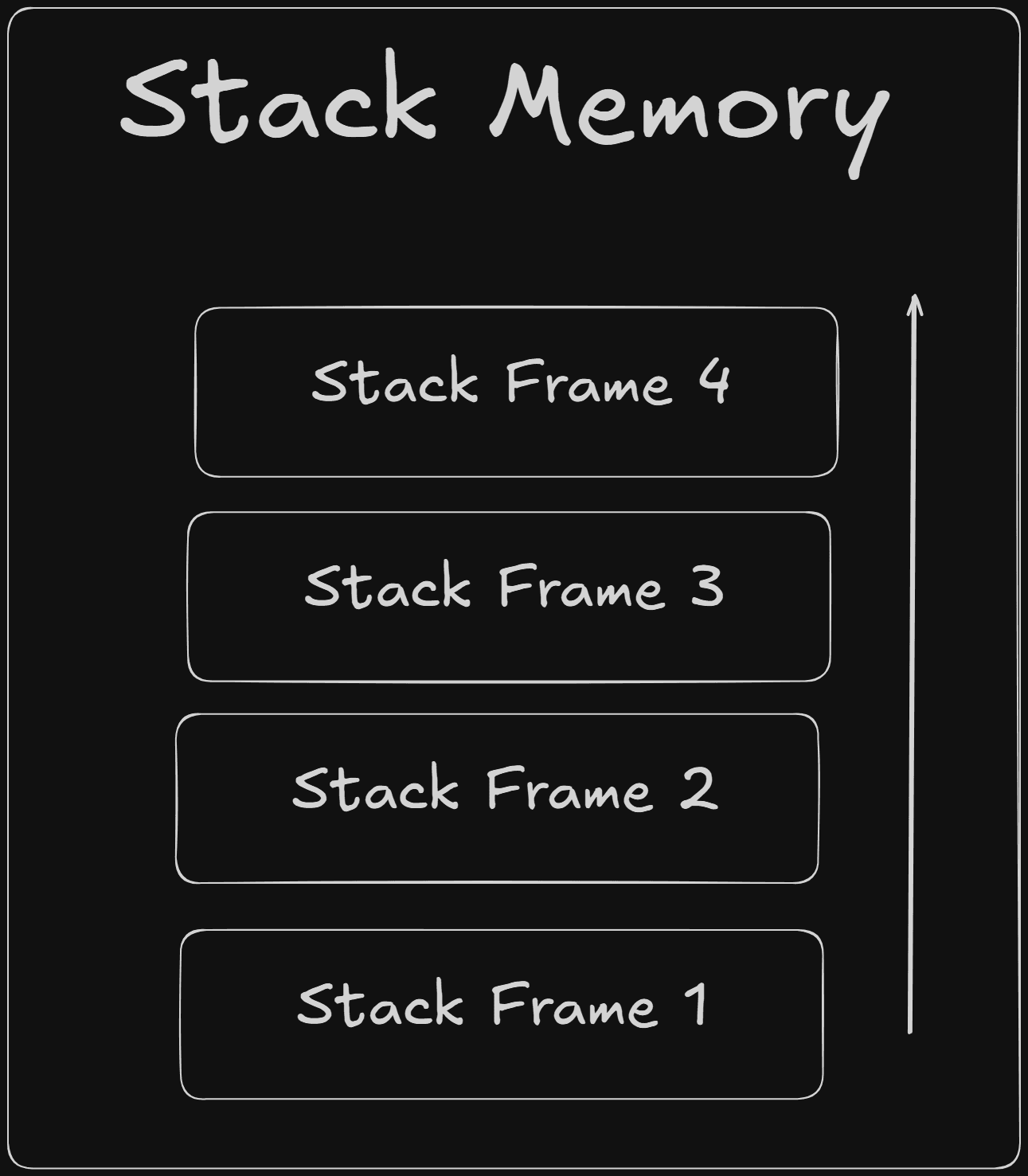
Example:#
Here, all variables like a, b, sum, x, and y are stored in stack memory. And both method calls (main and add) sit on the stack during execution.
What is Heap Memory?#
Heap memory is where Java stores objects and their instance variables. Unlike the stack, it's shared across the whole application and not cleaned up automatically when a method finishes. Instead, Java uses a Garbage Collector to remove unused objects from the heap.
Think of it like this:
- You create an object, it lives in the heap.
- You stop using it then the Garbage Collector removes it (eventually).
What goes into Heap Memory?
- Objects created using
new - Instance variables (fields) of objects
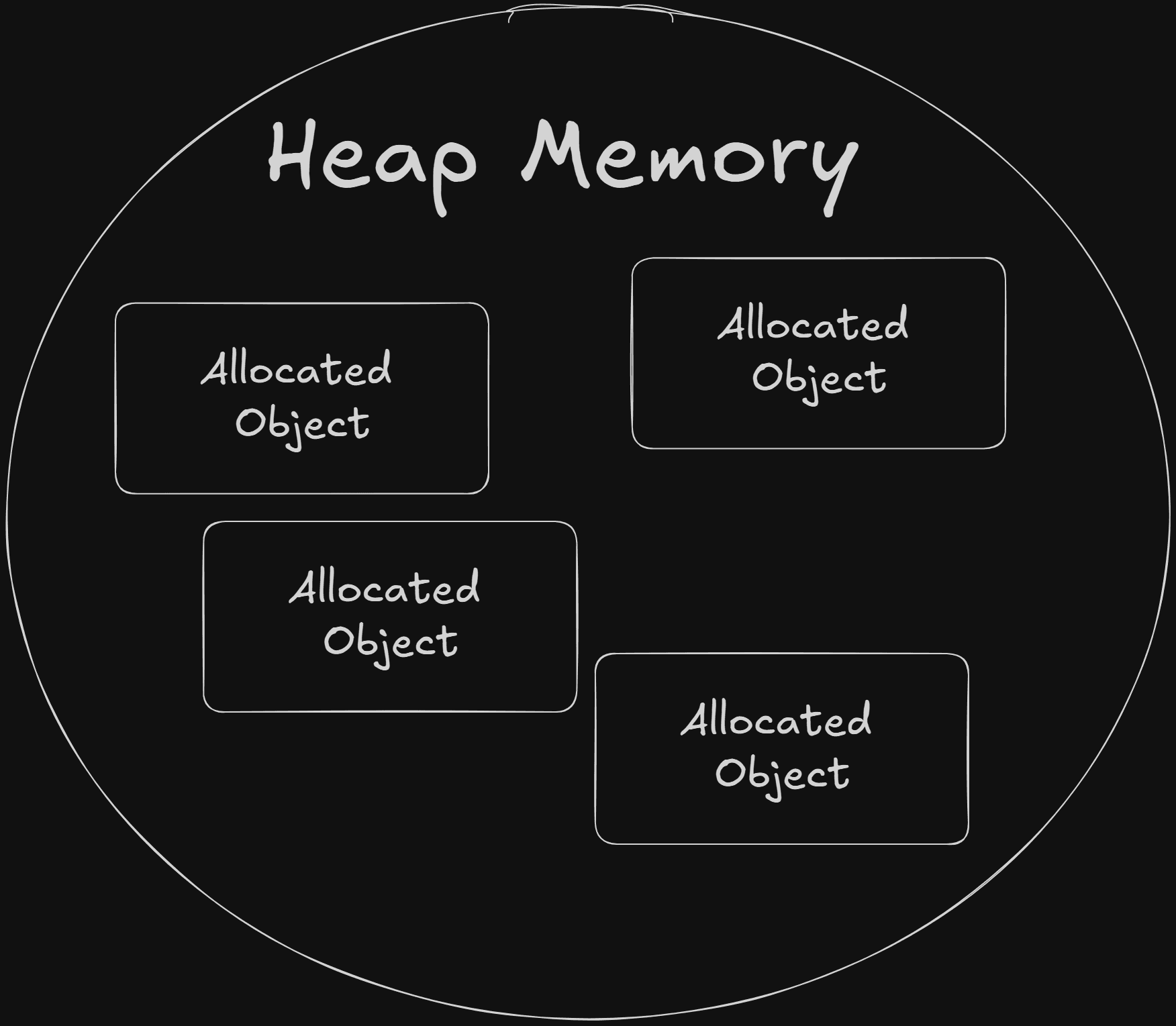
Example:#
Here, the Car object and its field model are stored in heap memory. But the reference myCar is stored in stack memory, pointing to the object in the heap.
Differences Between Stack Memory and Heap Space in Java#
The Stack and Heap has different similarities both in size and efficiency. In this section i will outline the core differences between the stack and Heap space in java.
- In the memory management, Stack follows the LIFO order while the Heap does not follows any order, as it is a dynamic data structure and it’s space complexity tends to be dynamic, allowing for flexible allocation and deallocation of memory.
- The Stack is used for a single thread of execution while Heap is dynamic and robust is used by the entire application.
- Whenever an object is invoked or created, it’s stored automatically into the Heap memory, while the stack memory contains the local variables and reference to the new object created.
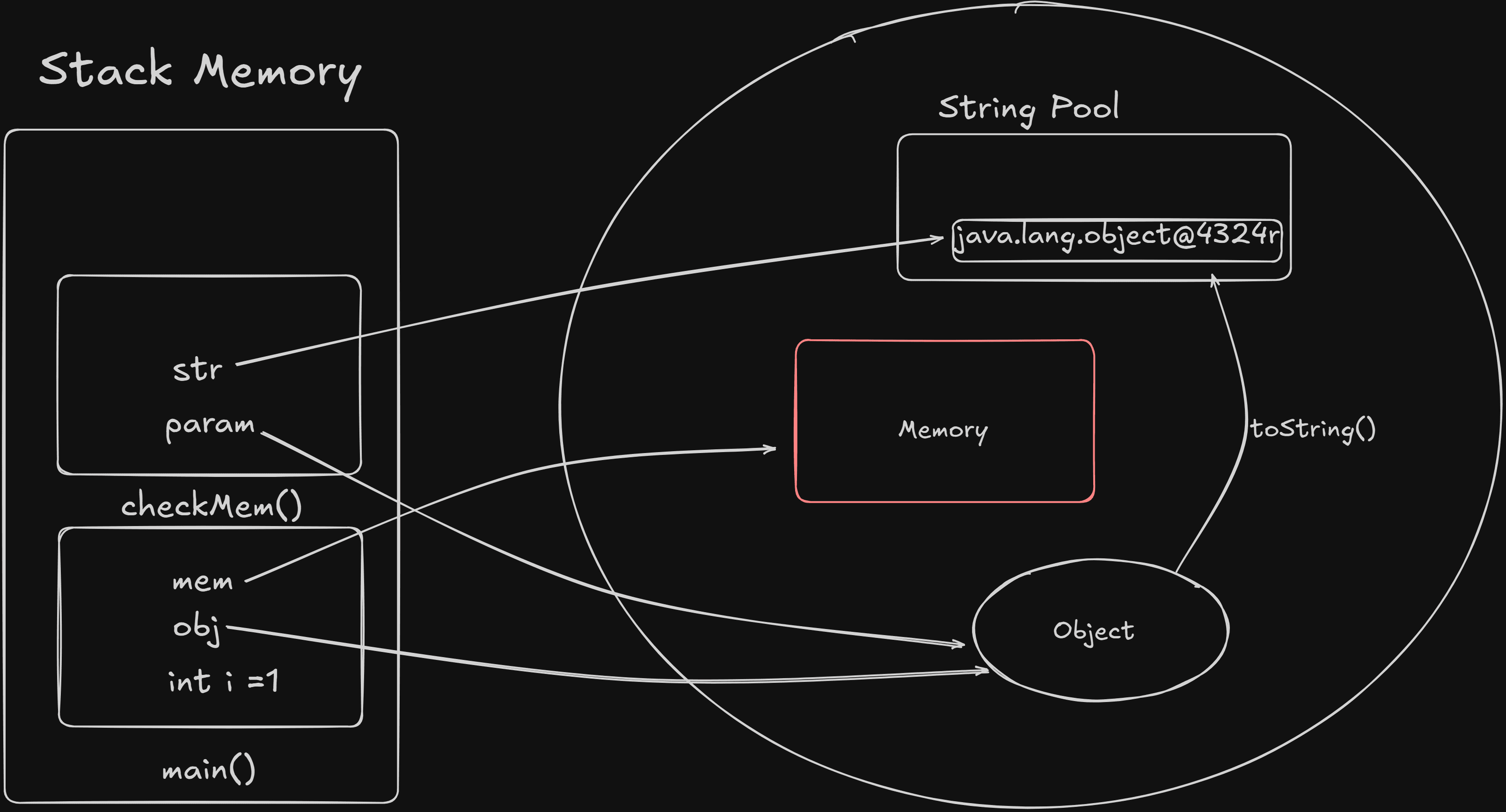
Stack vs Heap - Quick Comparison#
| Feature | Stack Memory | Heap Memory |
|---|---|---|
| Used for | Method calls, local variables | Objects and their fields |
| Memory size | Small | Large |
| Access speed | Faster | Slower |
| Auto-cleanup | Yes (when method ends) | No (Garbage Collected) |
| Location | Thread-specific (each thread has its own) | Shared across all threads |
Conclusion#
in short, Stack = short-term, fast, and method-focused and Heap = long-term, object-focused, and managed by Java's Garbage Collector, I hope this article made stack and heap memory easy to understand.
Want to Master Spring Boot and Land Your Dream Job?
Struggling with coding interviews? Learn Data Structures & Algorithms (DSA) with our expert-led course. Build strong problem-solving skills, write optimized code, and crack top tech interviews with ease
Learn more

